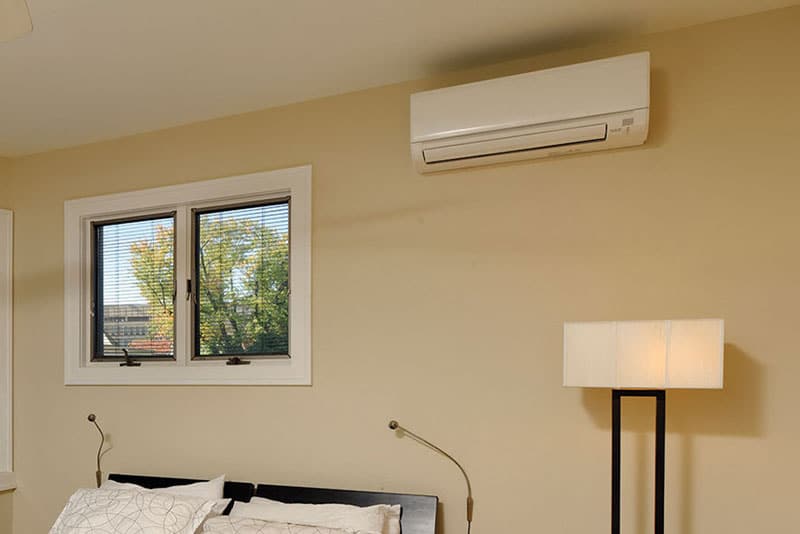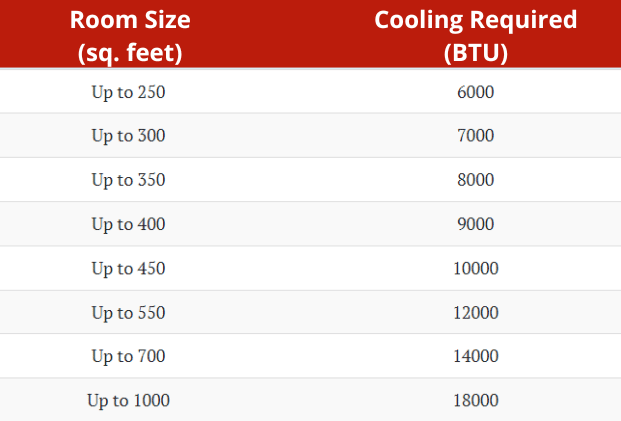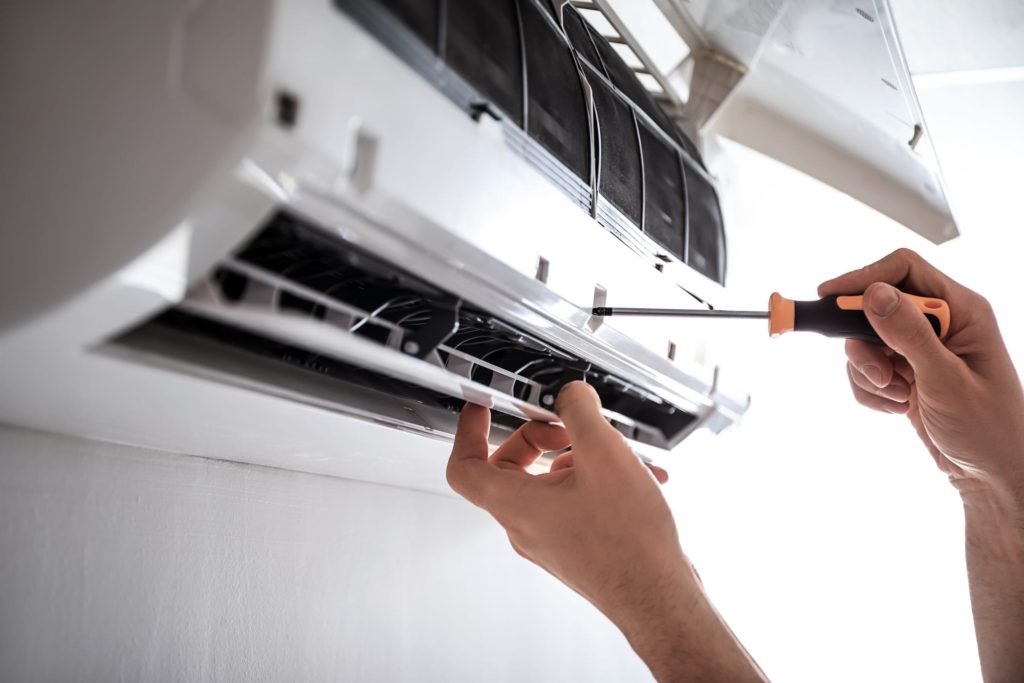You’ve probably heard the terms ductless, mini-split, or mounted cooling system. So what is a ductless air conditioner system? You guessed it – no ductwork!
Despite its popularity, many homeowners are still unaware of how mini-split air conditioners work or whether they are appropriate for upgrades or new building projects.
In this article, we will cover how mini-split air conditioners work and discuss some of the pros and cons of these types of AC systems.
How Do Ductless Air Conditioning Systems Work?
The cooling technique used by ductless air conditioning systems is the same as that of a standard central air conditioner. A ductless indoor unit, on the other hand, blasts chilled air directly into one living space, unlike central air conditioning, which uses one centrally positioned interior unit to cool air to the entire home through a system of ducts and vents.
A complete ductless mini-split air conditioner system must at the very least have an outdoor unit with a compressor, condenser coil, and fan, as well as an indoor unit with an evaporator coil and blower fan. Copper refrigerant tubing and electrical wiring link the two units.
All ductless mini-split air conditioner systems follow this process:
- The outdoor compressor unit pumps chemical refrigerant through the refrigerant tubing to the indoor unit’s coil.
- Heat and humidity are removed from indoor air blowing across the coil as the liquid refrigerant turns to gas.
- Cooler and less humid air is transmitted back into the living space.
- The warmth removed from the indoor air is absorbed by the liquid refrigerant.
- The refrigerant, in gas form, cycles back to the outdoor coil where it is converted back to a liquid as heat energy is released through the outdoor coil.
What Are The Pros & Cons of Ductless Mini-Split Air Conditioners?

Ductless air conditioning systems are becoming more prevalent in single-family houses. Although the units themselves are often a little more expensive than ducted AC components, this expense is compensated by the lack of ductwork installation and improved operating energy efficiency. Here are some of the pros and cons of having a mini-split air conditioner in your home:
Pros
- Easy installation with ductless: The absence of ducting means less difficulty with painting, repairing, and hassle. With only a small hole in the wall needed to connect piping from the indoor unit to the compressor unit outside, configuring your ductless air conditioner system is straightforward. There is no need for additional indoor wiring because the outdoor compressor unit also powers the indoor unit.
- Highly energy-efficient cooling system: Ductless systems don’t lose hot or cold air due to duct leakage. Most mini-split systems are approximately 20 to 30 percent more efficient than ducted systems.
- Precise Cooling: Inverter compressor technology makes cooling temperatures more precise. Instead of the constant up-and-down temperature swings supplied by typical single-stage systems, a variable-speed, inverter-controlled compressor operates like cruise control for your comfort. It efficiently maintains indoor temperatures with only minimal fluctuation.
- Quiet Operation: Never undervalue the importance of silent functioning to your overall comfort. Because of this, the best heating and cooling systems ought to be admired rather than heard. Longer, slower, and quieter comfort cycles are used by ductless outdoor systems with inverter-controlled variable-speed compressors. Long refrigerant lines to the outside unit also give the option of installing the outdoor unit further away from decks, patios, or other outdoor living spaces.
- Allergy Control: Ductless systems offer cleaner air in the rooms where they are installed thanks to filters in each indoor unit. Managing air quality with ductless is just as important as controlling air temperature. There is no air cross-contamination between rooms when circulation is controlled inside a small area.
Cons
- A micro split ductless air conditioning system may cost more to install than a conventional ducted system (but you may save on the utility costs over time)
- Mini split units are wall-mounted and visible inside a room, in contrast to a conventional HVAC system. However, the majority of designs are elegant and pleasing to the sight.
How Many Ductless AC Units Do I Need?
If you want to cool your entire home with a mini-split system, you’ll need multiple units. So how many do you need? Well, it’s up to you!
The better question would be “How many rooms do you want to cool?”
In general, you should expect a mini-split unit to cool the room in which it is placed. Cooling all the big main rooms will make the whole house feel the effect. The question is which rooms need to be cooled.
There are two factors to consider here:
- Which rooms do you need to cool to keep the whole house comfortable?
- Which rooms only do you want to cool?
There’s no point in cooling an entire apartment if you only use one room at a time! If you and your family are usually only in one or two rooms, it makes sense to fit the cooling there. You can save a lot of energy bills compared to cooling the whole house.
If you want to cool your entire home, focus on covering large spaces. Especially the ground floor and all master bedrooms. Normally, you can receive the service of four indoor units with one outdoor unit.
Once you know what you need, always consult a professional before dealing with your entire home system.
What Sizes Do Ductless Air Conditioning Systems Come In?
Let’s take a look at some of the parameters used to calculate what size mini split you may need for your home.
The power required for a mini-split unit really depends on the size of the room. As a rule of thumb, you can estimate your need as follows:
Area of Room in Feet (Length x Breadth) x 25 = BTU Required
For example, a 18′ x 14′ room roughly needs 18 x 12 = 252sq.ft. 252 x 25 = 6,300 BTU per hour of cooling.
As a quick rule of thumb, follow the table below:

The above values are approximate values for a standard room with standard ceiling heights. It’s not exactly a cover-all!
There are many other factors that can affect a load calculation. Your local HVAC expert will be familiar with these and have a way of re-calculating your estimate based upon these other factors. These may include:
- Ceiling height
- Quality of insulation
- Age of home
- Outdoor climate
- Number and quality of windows
- Sun exposure
- Other factors such as lighting, flooring type and appliances
Ductless Mini-Split Air Conditioning Maintenance Tips

Since we have all agreed that Ductless mini-split air conditioners are one of the most efficient and cost effective cooling options, you may want to make sure that you keep yours in the best shape possible. While it might be easy to forget about the mechanism keeping your home comfortable, not taking care of your ductless air conditioner could shorten its life and greatly reduce its functioning.
Here are some maintenance tips to keep your system functioning properly:
- Make sure the unit is solidly mounted on its base and that the fan wheel and blower assembly are balanced. Remove excess debris from the outside of the unit, then spray the coils clean. It’s more effective to clean coils from the inside out.
- Inspect and clean the outdoor condensing unit as you would for a central air conditioning system.
- For best results, once coils are clean apply a fungistat and bacteriostat to keep dangerous biological growth at bay.
- Turn the unit off and disconnect power before cleaning. Clean or replace filters
- Of course, the best way to make sure your ductless cooling system is operating at its best is with the help of an HVAC professional.
Let AirPlus expertly install an efficient, ductless mini-split heating and cooling system or air conditioner and enjoy year-round personal comfort!
.2309121422550.png)

